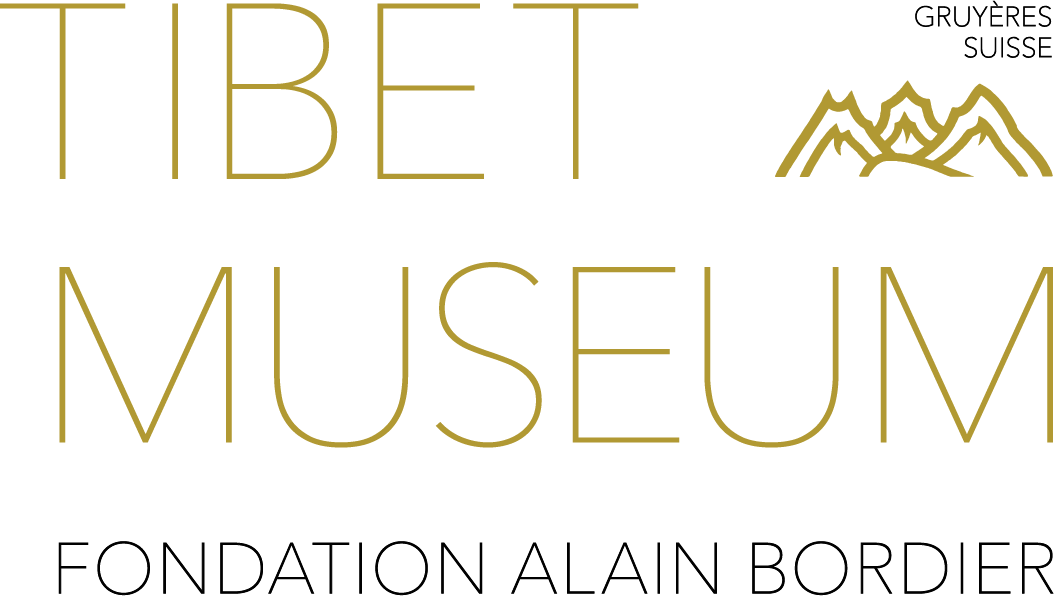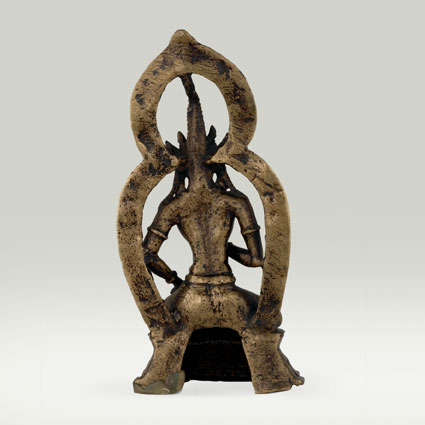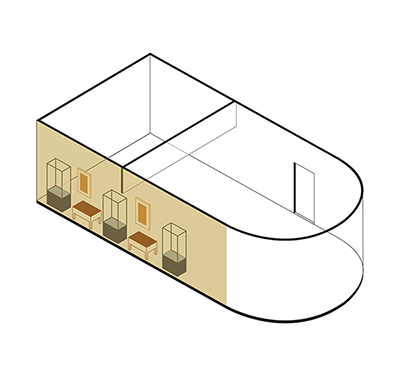ABS 093
Code: ABS 093
Country: Tibet (west)
Style:
Date: 1050 - 1150
Dimensions in cm WxHxD: 7.3 x 15.3 x 4.5
Materials: Brass
Primordial Buddha Vajrasattva (Tib.: Dorje Sempa) is seated in the diamond attitude (vajraparyankasana) on a single lotus pedestal. With his right hand he holds a five-pronged diamond sceptre (vajra) at heart level, and he rings a prayer-bell (ghanta) with the left hand. The vajra symbolizes the male principle of compassion, and the ghanta the female principle of wisdom. Together, they represent the “skillful means” on the path to enlightenment.
Vajrasattva is clad with a cloth (dhoti) tied around his waist with a belt. He wears ornaments, namely a small three-pointed crown in front of the tall knot of hair (jatamukuta), a pair of circular earrings, two necklaces, ornaments at the upper arms, wrists and ankles, and the “investiture with sacred thread” (upavita). His body is encircled by a broad, flaming aureole (prabhamandala), and his head set off against a second, pointed aureole.
This image is the work of a Tibetan artist who let himself be inspired by contemporary sculptures of artists from Kashmir and Himachal Pradesh who often worked for Tibetan patrons during the 11th and 12th centuries.
Vajrasattva practices are common to all of the four schools of Tibetan Buddhism and are used to clarify the confused mind.
Vajrasattva is clad with a cloth (dhoti) tied around his waist with a belt. He wears ornaments, namely a small three-pointed crown in front of the tall knot of hair (jatamukuta), a pair of circular earrings, two necklaces, ornaments at the upper arms, wrists and ankles, and the “investiture with sacred thread” (upavita). His body is encircled by a broad, flaming aureole (prabhamandala), and his head set off against a second, pointed aureole.
This image is the work of a Tibetan artist who let himself be inspired by contemporary sculptures of artists from Kashmir and Himachal Pradesh who often worked for Tibetan patrons during the 11th and 12th centuries.
Vajrasattva practices are common to all of the four schools of Tibetan Buddhism and are used to clarify the confused mind.






